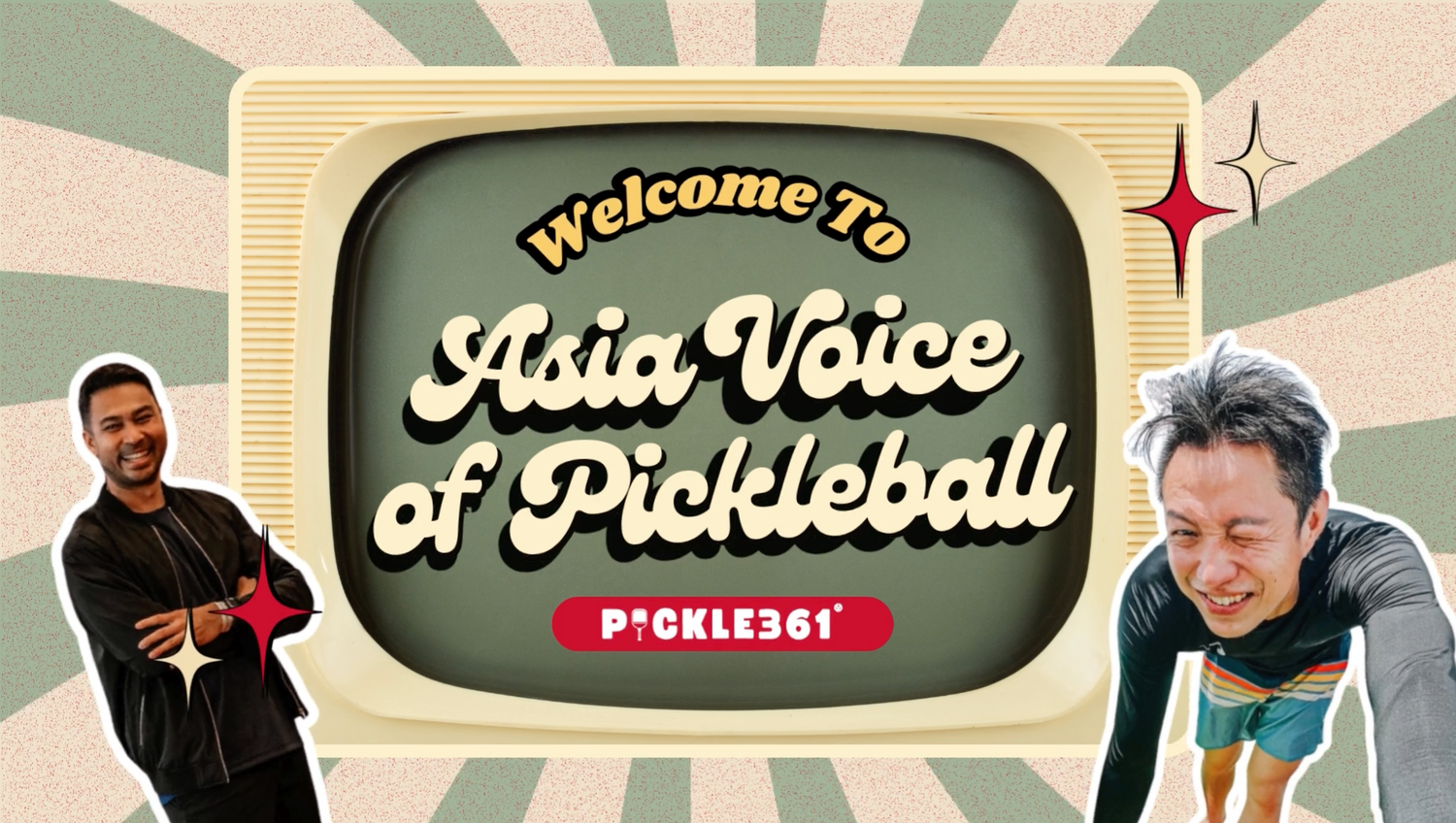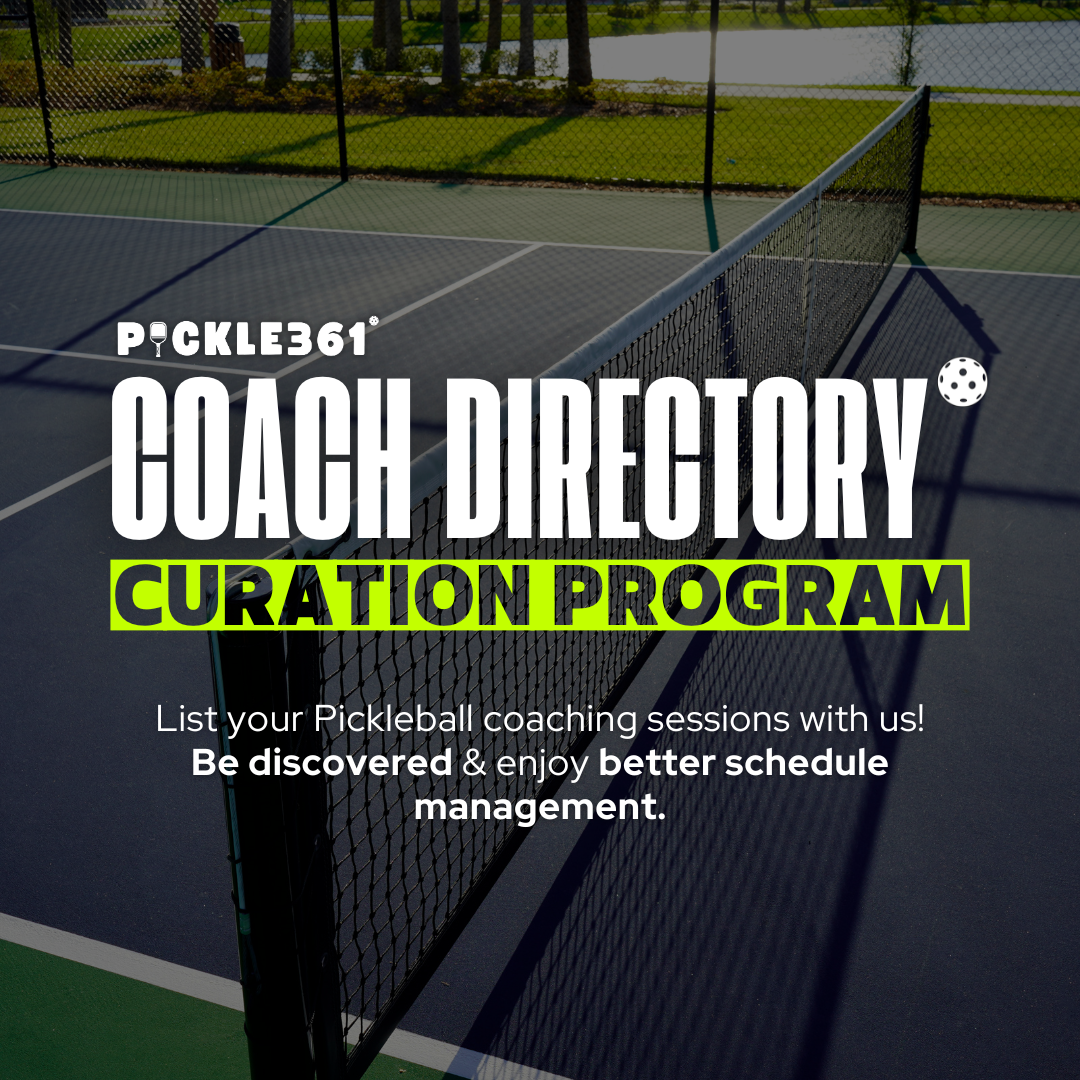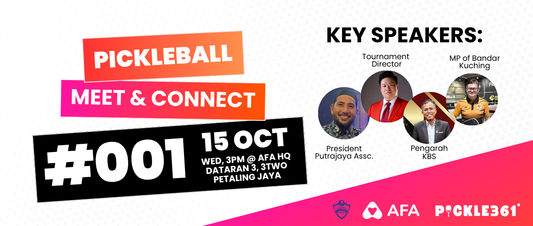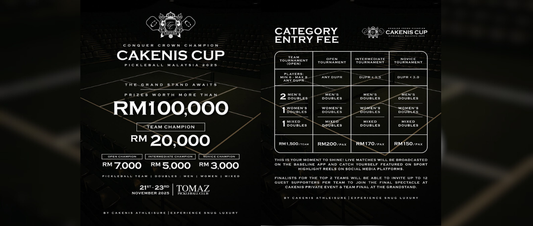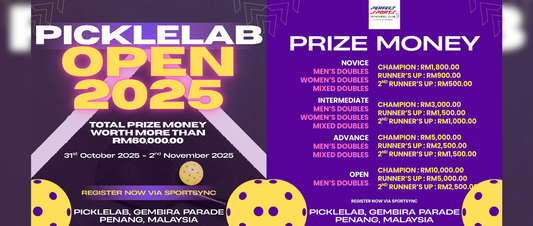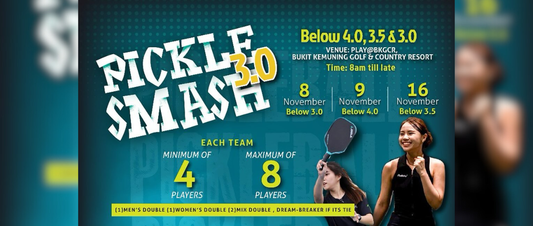
The Ultimate Guide to Building a Pickleball Court: 6 Key Success Factors
Andrew LeePickleball is rapidly growing across Malaysia, and more courts are popping up every month.
If you’re considering building your own pickleball court, whether for business or personal use, there are several key factors to get right to ensure long-term success.
From choosing the right location to optimizing spectator areas and business revenue streams, this guide covers the most critical elements in building a thriving pickleball court.
1. Location & The Surrounding
The first and most crucial decision is where to build your pickleball court. In the past five months alone, over 100 courts have been developed across Klang Valley and other states of Malaysia. A great location ensures steady foot traffic and an engaged playing community.
- Surrounding Population: Is your court near residential areas, offices, or industrial zones? A dense population ensures a steady stream of players. For instance, a court in a thriving industrial area means thousands of workers nearby looking for recreational activities after work.
- Existing Sports Facilities: If there are other sports centers in the area, it indicates that people are willing to travel there for recreation. Being near badminton halls, futsal centers, or even gyms can help attract a crossover crowd.
- Parking Availability: Free and ample parking is a huge plus. If you have 7 courts, consider that each court may have up to 8 players at a time, requiring dozens of parking spaces per session. Ideally, you should have on-site or nearby parking options, with at least 50 - 70 carpark slots depending on your venue size.
 Image via Playa Racquet Club
Image via Playa Racquet Club
2. Court Design, Space & Facility Planning
Once the location is settled, the next step is designing a space that enhances the playing experience.
- Number of Courts: Consider how many courts you can fit within your space while maintaining comfortable spacing between them.
- Right Balance on Space & Playability: Not every location can fit full tournament-standard courts, so compromises are needed. Recreational courts maximize capacity with reduced dimensions, while professional courts provide ample space for competitive play. This ensures a balance for both casual and serious players.
- Surface Quality: A high-quality court surface with proper cushioning reduces injury risks and improves playability.
- Spectator Areas: Seating arrangements for guests and players waiting for their turn add to the overall experience.
3. Weather-Proofing and Comfort
- Indoor vs. Outdoor Courts: Outdoor courts are great but vulnerable to unpredictable weather. A semi-covered or fully indoor setup ensures games continue despite rain or extreme heat.
- Climate Control & Ventilation: For indoor courts, invest in proper air circulation, cooling fans, or misting systems to maintain a comfortable playing environment. Semi-outdoor courts have no issue.
- Lighting Considerations: LED lighting enhances visibility for night play, while outdoor courts should address glare and shadow management for consistent gameplay.
 Image via Instagram
Image via Instagram
4. Amenities That Elevate the Experience, F&B Integration For More Than Just a Court
A successful pickleball venue is more than just courts; it’s about creating an enjoyable environment for players to socialize and relax.
- F&B Options: Having an in-house cafe or integrating a food and beverage outlet within the venue is a game-changer. Players often stay longer if there’s a place to grab a drink or a meal between games. A simple smoothie bar, halal kitchen, healthy snack options, or even a full-fledged sports cafe can boost revenue.
- Locker Rooms & Changing Facilities: Basic but clean changing rooms, showers, and lockers provide convenience for players, especially those coming from work.
- Pro Shop & Equipment Rentals: Offering paddles, balls, and accessories for sale or rent can attract both beginners and seasoned players.
 Image via Instagram
Image via Instagram
5. Coaching, Community Engagement & Marketing
Building a court is one thing, but ensuring its success requires active engagement.
- Coaching & Academy: Offer structured training programs for all skill levels, from beginners to competitive, juniors to seniors players. Certified coaches provide personalized lessons, group clinics, and academy programs. A well-run coaching academy attracts new players and builds a strong pickleball community.
- Social Media Presence: Regular updates, tournament highlights, and training sessions on platforms like Instagram and Facebook help keep the community engaged.
- Events & Tournaments: Hosting friendly matches, leagues, and training clinics not only attracts players but also creates a strong local pickleball culture.
- Corporate & Group Bookings: Encouraging companies to book the venue for team-building activities can be a consistent revenue stream.
 Coach Curation Program by Pickle361
Coach Curation Program by Pickle361
6. Spectator Areas: Turning Your Court into an Event Venue (Next Level)
To maximize revenue beyond player bookings, dedicating space for spectators is a game-changer. Hosting grandstand tournaments and league matches can bring in additional income through ticket sales and sponsorships.

Grandstand seating for comfort & revenue:
- Fixed & Modular Seating: Provide tiered seating with both free and premium options. Consider VIP seating with cushioned chairs, shade, and dedicated viewing angles.
- Event Ticketing Model: Charge for premium seats during tournaments while keeping a general admission area free.
- Digital Displays & Live Streaming: Install screens for match replays, sponsorship ads, and live scoreboards, enhancing the tournament experience.
- Multipurpose Spaces: Use the grandstand for community events, live screenings of major pickleball tournaments, exhibition matches or training workshops.
A well-planned pickleball venue is more than just a playing space and it's a hub for the community. By carefully selecting the right location, designing an excellent playing environment, and integrating key amenities, you can create a thriving pickleball destination.
If you’re serious about building a pickleball court, take these factors into consideration, and you’ll be on your way to creating a venue that players love coming back to!

